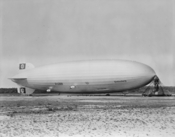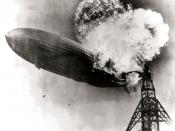Hydrogen Gas Disasters
2H2 + O2 â 2H2O
http://en.wikipedia.org/wiki/Space_Shuttle_Challenger_disaster http://www.mahal.org/articles/space/1995/12/the-space-shuttle-challenger-accident/page/1 http://en.wikipedia.org/wiki/Hindenburg_disaster
When? At 11:38, on January 28 1986, 73 seconds into its flight.
Where? Over the Atlantic Ocean, off the coast of central Florida.
What? The space shuttle challenger broke apart and exploded when it was only 73 seconds into its flight.
How? The tank of Hydrogen inside the External tank burst and leaked the liquid Hydrogen contents. With the sudden lack of Hydrogen, there was an extreme force that pushed the Hydrogen tank forward into the Oxygen tank, and that also burst. This caused the explosion.
All seven members in the space shuttle were killed. Hydrogen was used in the shuttle because it is a very powerful propellant- perfect for rockets, space shuttles, etc.
When? At 7:25 p.m. on May 6, 1937, while the Hindenburg was attempting to land because the wind conditions were to strong for it.
Where? At the Lakehurst Naval Air Station in New Jersey.
What? A flame appeared on the outer cover of the end of the Hindenburg airship, and Within 34 seconds, the whole airship was engulfed by fire.
How? Hugo Eckener thought that the fire was started by an electric spark caused by a build up of static electricity on the airship. The spark supposedly ignited hydrogen, which was leaking, on the outer skin of the airship.
There were 36 deaths, that included passengers, crew, and ground crew, and 61 survivors.
The airship was an aerostatic aircraft that stayed in the air by having a large "envelope" filled with a gas that was less dense than the surrounding atmosphere. The first lifting gas used was hydrogen, and this is why the Hindenburg contained it. Hydrogen gas is very flammable, so this leads many people onto thinking...


